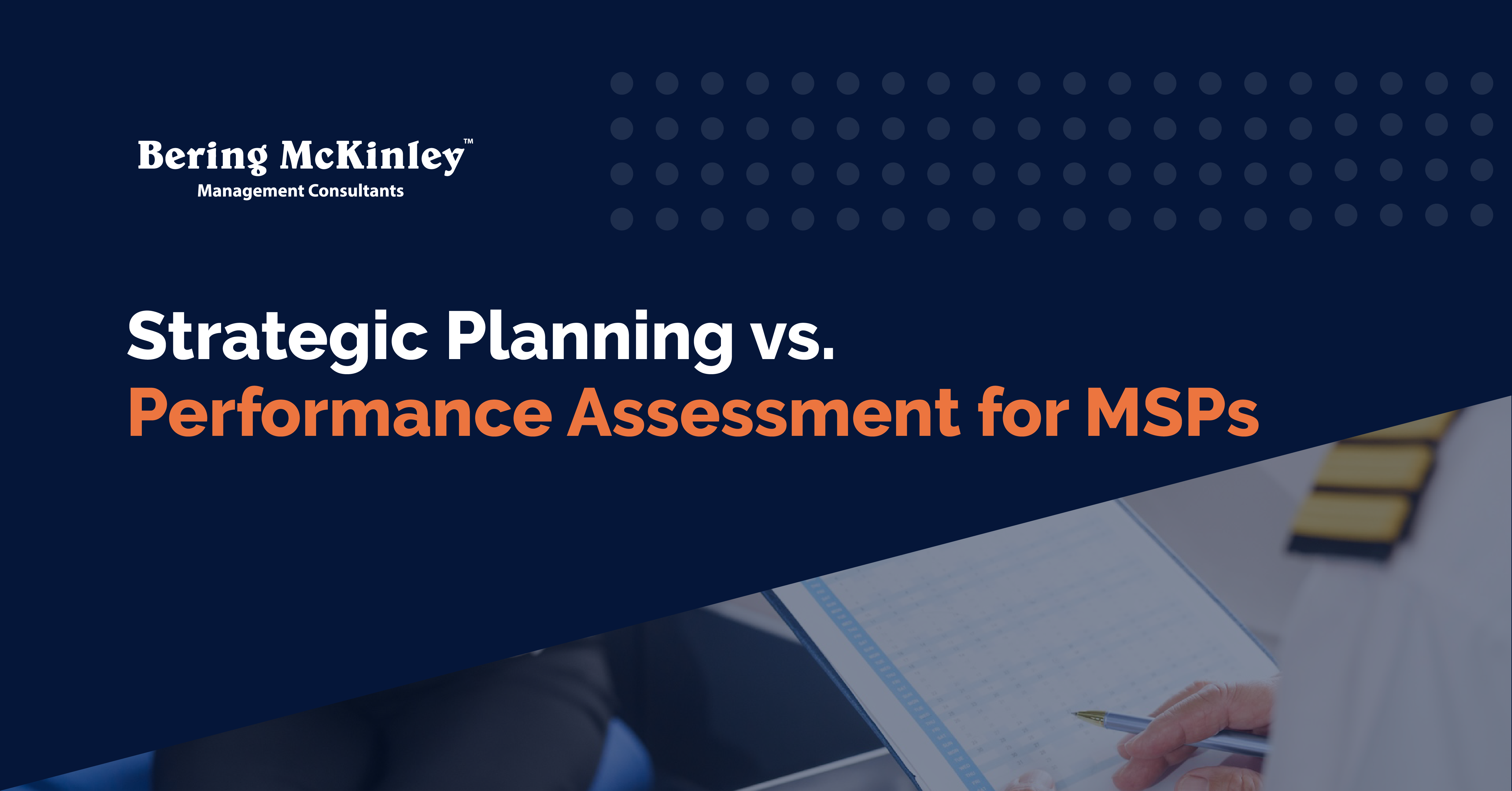3 min read
From Planning to Execution: Translating Business Goals into Performance Targets
 Josh Peterson
:
Feb 5, 2025 2:00:00 PM
Josh Peterson
:
Feb 5, 2025 2:00:00 PM

Running a successful Managed Service Provider (MSP) business is no small feat—it requires careful strategy, precise execution, and constant adaptation. While setting ambitious business goals is a key first step, articulating those aspirations into actionable performance targets is where the magic happens. Wondering how to bridge the gap between planning and execution? This guide breaks it all down, empowering MSP owners to turn visions into measurable results.
Understanding Business Goals for MSPs
A thriving MSP business typically revolves around a few core goals. Knowing what these goals are—and how they tie into your long-term vision—is crucial. Here are some examples of business goals specific to MSPs:
- Revenue Growth: For MSPs, profitability often comes down to expanding service offerings or acquiring more clients. Revenue growth goals might look like increasing annual recurring revenue (ARR) by 15% in the next fiscal year.
- Customer Satisfaction: Ensuring customer success is non-negotiable in this industry. Goals could include reducing customer complaint resolution time or maintaining a 90+ Net Promoter Score (NPS).
- Operational Efficiency: If your technicians are bogged down by inefficiencies, your growth potential shrinks. Operational efficiency goals might aim for a 20% reduction in ticket resolution time by using new automation tools.
Taking a step back to assess your overarching business goals ensures clarity as you move toward creating actionable steps.
The Role of Performance Targets
Business goals inspire vision, but performance targets turn that vision into measurable progress. Think of it this way—if business goals are the destination, performance targets are the roadmap that gets you there.
For example:
- A goal like "increase monthly ticket closures" becomes specific with a target like "resolve 150 tickets per technician per month."
- "Improve onboarding processes" becomes actionable with a target like "reduce new customer onboarding timelines to less than 15 days."
Performance targets make goals tangible. They quantify your progress and illuminate whether you’re on or off track to achieving business success.
Steps to Translate Business Goals into Performance Targets
Here’s a step-by-step guide to help you set clear, actionable performance targets aligned with your MSP’s business objectives.
1. Set SMART Targets
The SMART framework is an unrivaled tool for effective performance management. Ensure your targets are:
- Specific: Define exactly what you want to achieve (e.g., "Reduce response time for priority tickets").
- Measurable: Include metrics to assess progress (e.g., "Cut response time to under 15 minutes").
- Achievable: Set targets that challenge your team but remain realistic.
- Relevant: Align each target with your larger business goals.
- Time-Bound: Establish a deadline for achieving the target.
For example, instead of a vague goal like “improve service response,” a SMART target would read, “Reduce first-response time for high-priority tickets to under 20 minutes by the end of Q2.”
2. Align with Business Strategy
Your performance targets should tie directly into your broader business strategy. If your MSP is focused on scaling operations, targets might include hiring additional technicians or upgrading infrastructure. Always ask, “Does this move us closer to our long-term goals?”
3. Break Down Goals by Department
Performance targets are easier to execute when tailored to each department. For example:
- Sales: Secure 10 new clients in Q3.
- Operations: Decrease service downtime to under 0.1% per month.
- Finance: Improve profit margins from 30% to 35%.
Breaking goals into smaller departmental actions ensures alignment across teams.
4. Engage Key Stakeholders
Getting your team on board early is essential for buy-in. Host regular meetings with department heads, technicians, and your leadership team to align on targets and solicit their feedback. People perform best when they understand how their efforts directly contribute to the MSP’s overarching success.
5. Continuously Reassess
Business environments—and customer needs—change. Regularly assess whether your targets still make sense or need refinement. For instance, if you implemented a new PSA tool that drastically speeds up internal workflows, you might adjust your efficiency targets upward.
Tools and Metrics for Performance Measurement
Tracking and measuring progress requires reliable tools tailored to your MSP’s needs. Here are some of the top tools and KPIs to consider implementing.
Tools for MSPs
- PSA Platforms (Professional Services Automation): Tools like ConnectWise Manage or Autotask PSA help monitor ticketing, asset management, and billable hours.
- RMM Tools (Remote Monitoring and Management): Platforms such as Atera and NinjaOne monitor system health and apply preventive measures remotely.
- Reporting and Analytics Software: Tools like BrightGauge or MSPbots enable comprehensive dashboards and reporting for monitoring KPIs.
Key Metrics to Track
- Average Resolution Time: Measure efficiency by tracking how long it takes to resolve customer tickets.
- Customer Retention Rate: Retaining clients means recurring revenue and satisfied customers—key indicators of success.
- Technician Utilization Rate: Optimize workloads by measuring the percentage of time technicians spend on billable tasks.
- First-Time Fix Rate: This speaks directly to quality and efficiency in customer interactions.
Arming yourself with these tools ensures you know where you stand at any given time and sets the foundation for actionable insights.
Unlock Your MSP's Full Potential
Translating business goals into clear performance targets isn’t just "good to do"—it’s what sets thriving MSPs apart from their competition. With SMART frameworks, the right tools, and a thorough understanding of your key metrics, you’ll not only set impactful goals—you’ll consistently hit them.

Strategic Planning vs. Performance Assessment: Understanding the Differences and Synergies
Managing a Managed Service Provider (MSP) is no small feat. Between juggling client satisfaction, keeping up with technology trends, and maintaining...

Organizational Strategic Planning for Business Performance
MSP owners, does your business feel stuck in a reactive cycle? Always firefighting day-to-day operational issues but rarely finding time to think...

![[CTA] From Planning to Execution- Translating Business Goals into Performance Targets](https://beringmckinley.com/hs-fs/hubfs/%5BCTA%5D%20From%20Planning%20to%20Execution-%20Translating%20Business%20Goals%20into%20Performance%20Targets.jpg?width=2500&height=654&name=%5BCTA%5D%20From%20Planning%20to%20Execution-%20Translating%20Business%20Goals%20into%20Performance%20Targets.jpg)
